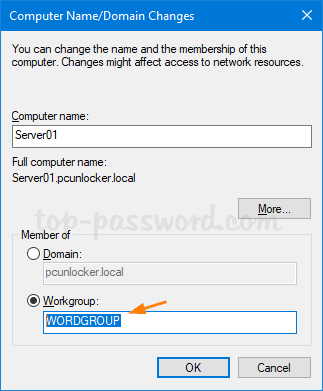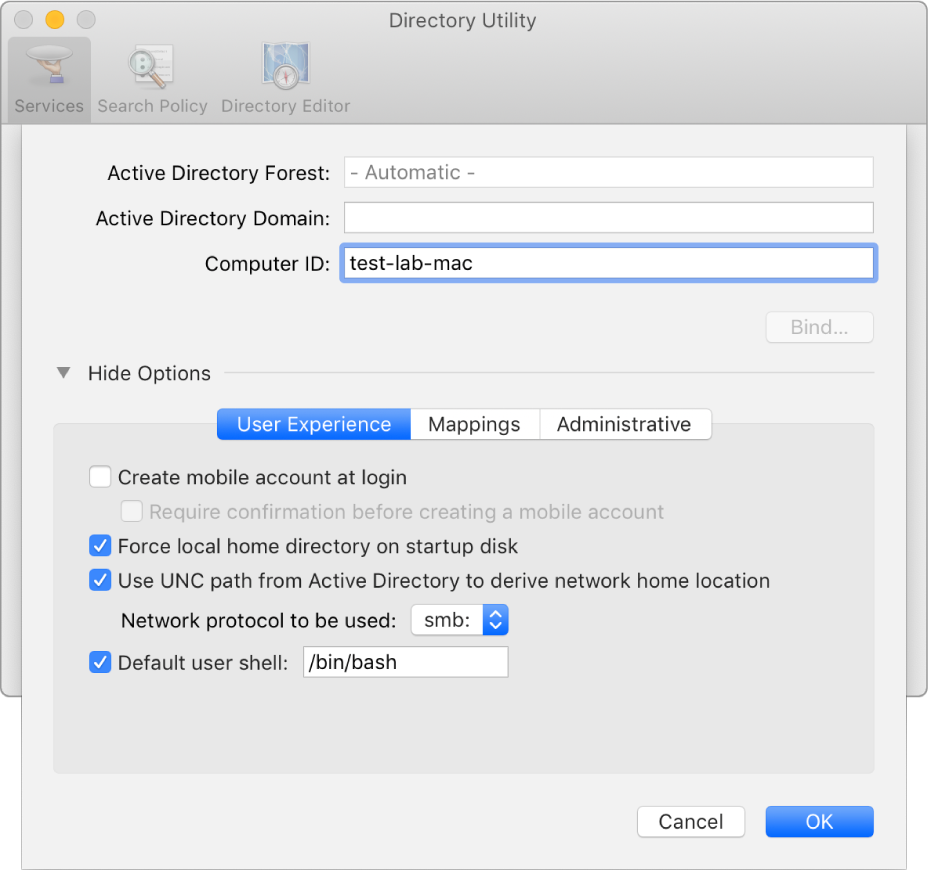- Disconnect Mac From Domain Unbind Windows 10
- Disconnect Mac From Domain Unbind Key
- Disconnect Mac From Domain Unbind Free
- Disconnect Mac From Domain Unbind Server
A domain account to use for permission to add the computer back to the domain (as well as detecting when the computer has come back after a reboot). Here is a snippet of the main functionality of the script: Click on image for larger view. In a nutshell, this script does the following: Ensures the remote computer is online. Occasionally a mac on our network stops connecting to the network. I was told to get it to reconnect to unbind it from the active directory and then delete the ldap settings, restart computer, rebind to active directory and then replace the ldap settings. A domain name is a name for a domain, consisting of an alphanumeric string that can contain dots. If it contains dots, it indicates one or more subdomains. A hostname can be appended by a domain name, with the both of them separated by a dot to create a FQDN (fully qualified domain name).
Let’s assume the following scenario. We have a Domain Controller on the network that has ceased to work altogether, for some reason that we don’t care about at this point. We have no backup, it will not work again, so we will need to completely remove it from the infrastructure.

To achieve this, we will need to implement a forced removal of the Domain Controller from Active Directory. Furthermore, because such an action leaves some orphaned metadata in the AD, we will then need to go ahead and clean up these metadata. In case the DC is somewhat online, the first action, however, is to try to demote it from AD.
With this scenario, we will deal with this article. Let’s move on.
Forced removal of a Domain Controller from Active Directory
The forced removal of a DC can be done in 3 ways. Using the Active Directory Users and Computers console, Active Directory Sites and Services console, and the NTDSUtil command-line tool.

When you use the two consoles, Microsoft claims that the orphaned metadata are automatically cleaned. However, as you will see, there are still some records of the deleted DC, especially on the DNS console and Sites and Services. Although DNS scavenging takes care of removing them, personally when I delete a DC, I do a quick check of all DNS objects to confirm and delete all the records that are left.
Using the Users and Computers console
Open the Active Directory Users and Computers console and go to the Domain Controllers OU. Here, right-click the DC to be removed and then Delete.
Confirm the deletion by pressing Yes.
Immediately afterward, you will see a message informing you that you are about to remove a Domain Controller without using the classic method we have described in an earlier article. If DC is not going to go back online again, you need to select the Delete this Domain Controller anyway. It is permanently offline and can no longer be removed using the removal wizard option, and then click the Delete button.
If the DC you are deleting was also a Global Catalog (GC) server, click Yes to confirm the deletion.
If the DC you are deleting had one or more FSMO roles, click OK to transfer them to another DC. This if you have not already seized them yourself.
Using Active Directory Sites and Services console
Open the Active Directory Sites and Services console, expand the Sites object till you find the DC you want to delete. Here, right-click the NTDS Settings icon on the DC, and then click Delete.
Confirm the deletion by pressing Yes.
Disconnect Mac From Domain Unbind Windows 10
Confirm again while accepting the warnings by clicking the Delete button.
As before, if DC was also Global Catalog and/or had at least one of the FSMO roles, you will need to confirm the deletion.
You can then delete the DC object in the Active Directory Sites and Services console.
Using the NTDSUtil tool
First, open the command line or PowerShell with administrator privileges.
Type ntdsutil and press Enter.
Type metadata cleanup and press Enter.
Type connections and press Enter.
Type connect to server <-servername> and press Enter. Where <-servername>, is the name of a working DC in the same domain.
Type quit and press Enter.
Type select operation target and press Enter.
Type list domains and press Enter.
Type select domain <-number> and press Enter. Where <-number>, the corresponding number to the domain that the non-functional DC member was a member of.
Type list sites and press Enter.
Type select site <-number> and press Enter. Where <-number>, the number that corresponds to the site that the non-functional DC member was a member of.
Type list servers in site and press Enter.
Type select server <-number> and press Enter. Where <-number>, the number that corresponds to the DC you want to remove.
Type quit and press Enter.
Type remove selected server and press Enter.
Disconnect Mac From Domain Unbind Key
In the confirmation window that appears, click Yes to continue the deletion process.
Finally, type quit and press Enter to exit the NTDSUtil management environment.
After completing the steps above as you like, do not forget to check all DNS objects to delete any records of the removed DC.
Related posts:
Disconnect Mac From Domain Unbind Free
We are doing a renaming project where I work and all of the PCs have been no problems at all. All of the Macs though are not going as easily. I can change the share name but that does not do anything in Active Directory. So I was wondering if I unbind the computers from Active Directory and then rebind it so that I can change the name will this also destroy all of the Network User(s) data on the machine?
Disconnect Mac From Domain Unbind Server
Active Directory-OTHER, Mac OS X (10.5), 10.5.x, 10.6.x, Windows 2008 R2
Posted on Jun 30, 2011 1:08 PM